Study on the Low Plastic Behavior of Expansion Deformation of Austenitic Stainless Steel
Abstract
:1. Introduction
2. Experimental Materials and Methods
2.1. Mechanical Property Test
2.2. Microstructure Observation
3. Experimental Results and Discussion
3.1. Mechanical Performance Analysis
3.2. Fracture Morphology
3.3. Deformation Twin Configuration
3.4. Mechanical Analysis of Expansion Deformation of TWIP Steel
3.5. Mechanism Discussion
4. Conclusions
- Through an analysis of the expansion mechanical model, it was found that, compared with uniaxial stretching, expansion deformation is a multi-directional, force-bearing, high-constraint, and high-strain deformation mode. The stress state coefficient of this deformation mode is lower. This causes TWIP steel to exhibit lower plasticity during expansion deformation, and is the macromechanical reason for this phenomenon.
- The morphology of the twins during the expansion deformation of TWIP steel is different from that of the twins during uniaxial tension. This difference leads to the low plastic behavior of TWIP steel during expansion deformation. From a comparison of expansion and tensile deformation, it was shown that the former produces more twins. Due to the emergence of a large number of twins, the number of twin boundaries increases, leading to delivery between twins, which hinders dislocation slips during the expansion deformation process. A large number of dislocations accumulate and a large amount of stress is concentrated at the intersection of twins, which in turn lead to crack formation and expansion during the expansion and deformation of TWIP steel, resulting in a decrease in the plasticity of TWIP steel.
Author Contributions
Funding
Data Availability Statement
Conflicts of Interest
References
- Zheng, F.H.; Han, L.J.; Yang, L.; Sun, M.G.; Peng, J.S. Current status of emerging drilling technology development at home and abroad. Oil Drill. Technol. 2008, 160, 5–11. [Google Scholar]
- Li, X.L. PetroChina’s Expansion Pipe Technology Gains Important Breakthrough. Offshore Oil 2010, 30, 80. [Google Scholar]
- Zhang, J.; Li, Q.T. Expandable tube technology application and research. Teach. Tech. Phys. 2013, 21, 120–121. [Google Scholar]
- He, L.; Ye, Y.; Qunyi, W.; Huilan, D. Challenges and countermeasures facing casing damage in Daqing oilfield. In Proceedings of the SPE Europec Featured at EAGE Conference and Exhibition, Madrid, Spain, 13–16 June 2005. [Google Scholar]
- Qi, G.Q.; Yang, Z.; Shangguan, F.S.; Yang, L.N.; Bai, Q. Expandable tube technology research progress and engineering applications. Oil Mine Mach. 2012, 41, 72–76. [Google Scholar]
- Ma, H.T.; Ji, C.J. Foreign expansion tube technology development and application. Overseas Oilfield Eng. 2006, 20–24. [Google Scholar]
- Yang, Y. Design and Development of Materials for Expandable Tubes; Southwest Petroleum University: Chengdu, China, 2001. [Google Scholar]
- Cao, C.; Ren, R.Q.; Wang, H.W.; Yin, H.W. New progress in the application of foreign expansion tube technology. Oil Mach. 2013, 41, 29–32. [Google Scholar]
- Wang, Z.G.; Liu, Y.S.; He, J.F.; Zhang, C.F.; Zhang, C.J.; Guo, X.W. Study of Separate Layer Fracturing Techniques on Casing Damaged Wells. J. Can. Pet. Technol. 2009, 48, 38–44. [Google Scholar] [CrossRef]
- Dwivedi, S.K.; Vishwakarma, M. Effect of hydrogen in advanced high strength steel materials. Int. J. Hydrogen Energy 2019, 44, 28007–28030. [Google Scholar] [CrossRef]
- Yang, L.H. Development and Performance Analysis of TWIP-I Steel for Expandable Sieve Tube Base Pipe; Southwest Petroleum University: Chengdu, China, 2011. [Google Scholar]
- Kuziak, R.; Kawalla, R.; Waengler, S. Advanced high strength steels for automotive industry. Rev. Metal. 2012, 4, 118–131. [Google Scholar] [CrossRef]
- Frommeyer, G.; Brüx, U.; Neumann, P. Supra-ductile and high-strength manganese-TRIP/TWIP steels for high energy absorption purposes. ISIJ Int. 2003, 43, 438–446. [Google Scholar] [CrossRef]
- Grassel, O.; Frommeyer, G. Effect of martensitic phase transformation and deformation twinning on mechanical properties of Fe-Mn-Si-Al steels. Mater. Sci. Technol. 1998, 14, 1213–1217. [Google Scholar] [CrossRef]
- Curtze, S.; Kuokkala, V.T. Dependence of tensile deformation behavior of TWIP steels on stacking fault energy, temperature and strain rate. Acta Mater. 2010, 58, 5129–5141. [Google Scholar] [CrossRef]
- Cheng, Z.L. Effect of Torsional Deformation on Microstructure and Mechanical Properties of Fe-Mn-Al-Si System TWIP-Ⅰ Steel; North University of China: Taiyuan, China, 2021. [Google Scholar]
- Chen, X.M.; Wang, Y.H.; Wang, T.S. A Review of Research on Factors Affecting Mechanical Properties of High Manganese Steels. Therm. Process. 2022, 51, 1–7. [Google Scholar]
- Liu, S.; Chen, L.; Geng, Y.F.; Feng, Y.L. Progress in the study of hydrogen embrittlement in plastic steels induced by twin crystals. J. Plast. Eng. 2021, 28, 6–13. [Google Scholar]
- Idrissi, H.; Renard, K.; Ryelandt, L.; Schryvers, D.; Jacques, P.J. On the mechanism of twin formation in Fe-Mn-C TWIP steels. Acta Mater. 2010, 58, 2464–2476. [Google Scholar] [CrossRef]
- Lee, S.; Kim, J.; Lee, S.J.; De Cooman, B.C. Mechanical Behavior of Multi-phase 12%Mn TWIP Steel. The Chinese Society for Metals. In Proceedings of the Abstracts of Asia Steel International Conference 2012 (Asia Steel 2012), Dresden, Germany, 1–3 October 2012; Volume 1. [Google Scholar]
- Hondt, C.; Doquet, V.; Couzinié, J.P. Direct monitoring of twinning/detwinning in a TWIP steel under reversed cyclic loading. Mater. Sci. Eng. A 2021, 814, 141250. [Google Scholar] [CrossRef]
- Karaman, I.; Yapici, G.G.; Chumlyakov, Y.I.; Kireeva, I.V. Deformation twinning in difficult-to-work alloys during severe plastic deformation. Mater. Sci. Eng. A 2005, 410, 243–247. [Google Scholar] [CrossRef]
- El-Danaf, E.; Kalidindi, S.R.; Doherty, R.D. Influence of grain size and stacking-fault energy on deformation twinning in fcc metals. Metall. Mater. Trans. A 1999, 30, 1223–1233. [Google Scholar] [CrossRef]
- Asgari, S.; El-Danaf, E.; Kalidindi, S.R.; Doherty, R.D. Strain hardening regimes and microstructural evolution during large strain compression of low stacking fault energy fcc alloys that form deformation twins. Metall. Mater. Trans. A 1997, 28, 1781–1795. [Google Scholar] [CrossRef]
- GB/T228.1-2021; Metal Materials Tensile Test, Room Temperature Test Method. National Standard of The People’s Republic of China: Beijing, China, 2021.
- Wu, W.; Song, K.H.; Liu, C.Y.; Wan, C.L.; Jiang, P. Study on Special Deformation Mechanism of 2205 Duplex Stainless Steel During Expansion Test. J. Mater. Eng. Perform. 2023, 32, 8625–8636. [Google Scholar] [CrossRef]
- Xiong, R.G.; Fu, R.Y.; Su, Y.; Lin, L. Fracture mechanisms of TWIP steels under dynamic t ensile conditions. Shanghai Met. 2008, 30, 12–15. [Google Scholar]
- Lin, C. Deformation Mechanism and Organizational Properties of Fe-Mn-Si-Al Twin-Induced Plastic Steels under Dynamic Loading Conditions; Southwest Jiaotong University: Chengdu, China, 2018. [Google Scholar]
- Zhang, Y.J.; Lei, M.R. Simplification of the theoretical model of the expansion force of a solid expansion tube. Mach. Tools Hydraul. 2019, 47, 150–154. [Google Scholar]
- Liu, C.Y.; Song, K.H.; Wu, W.; Jiang, P.; Jiang, Y.F.; Xia, X.C.; Liao, B. Microstructure analysis and crack nucleation in TWIP-Ⅰ steel tube at expansive deformation. Mater. Res. Express 2021, 8, 1–13. [Google Scholar] [CrossRef]


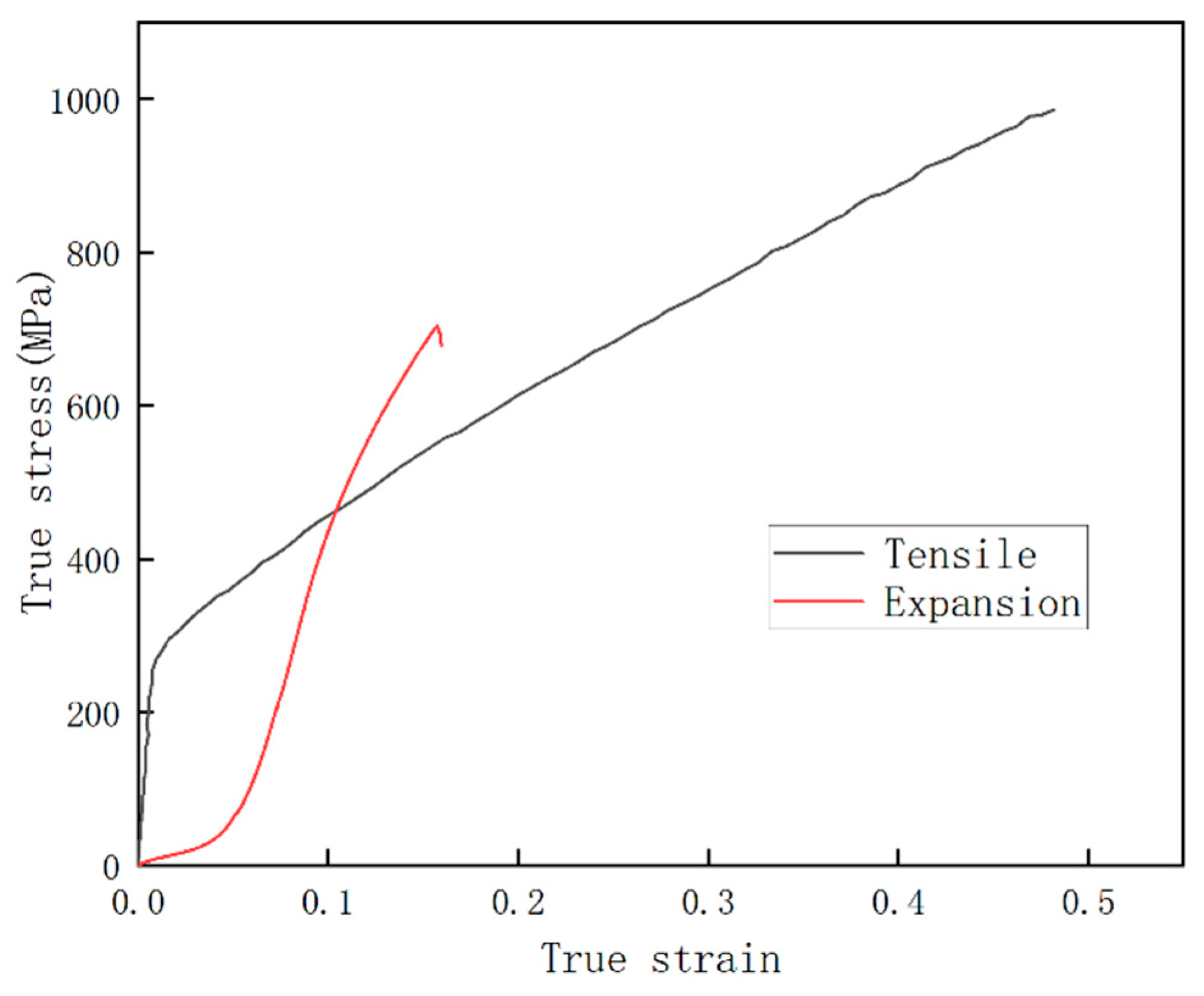


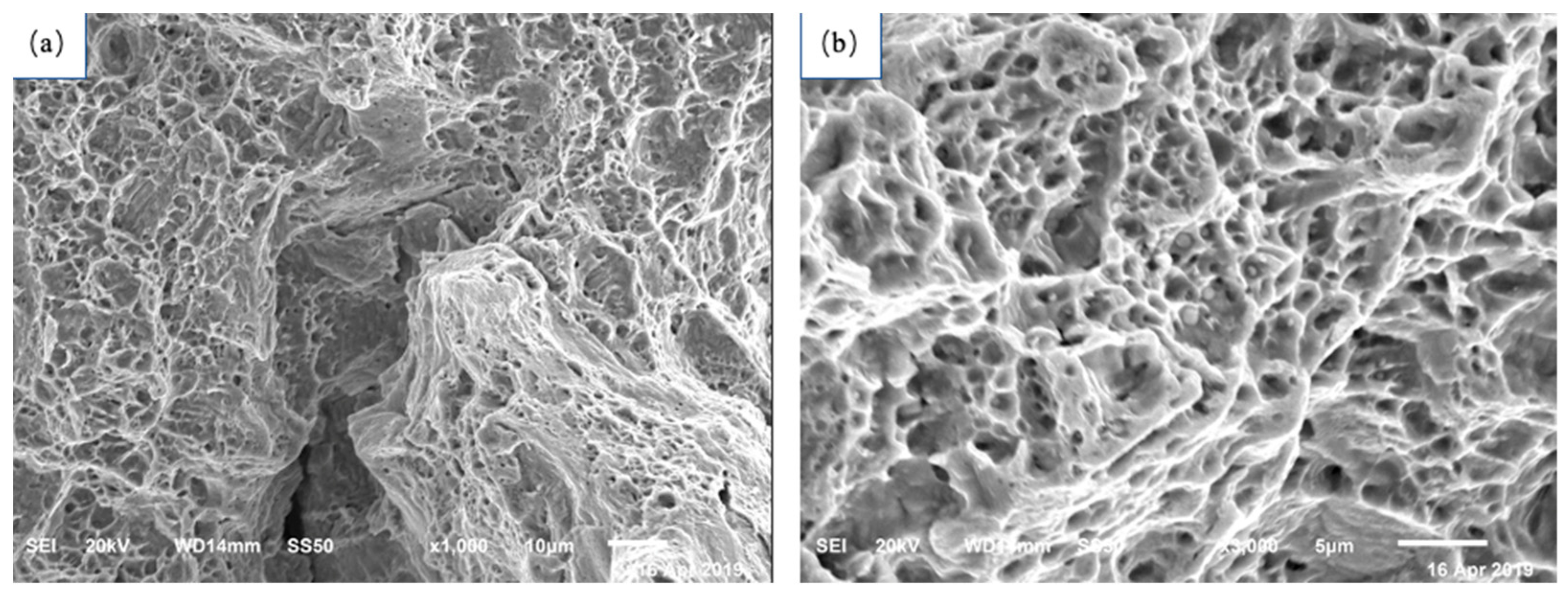
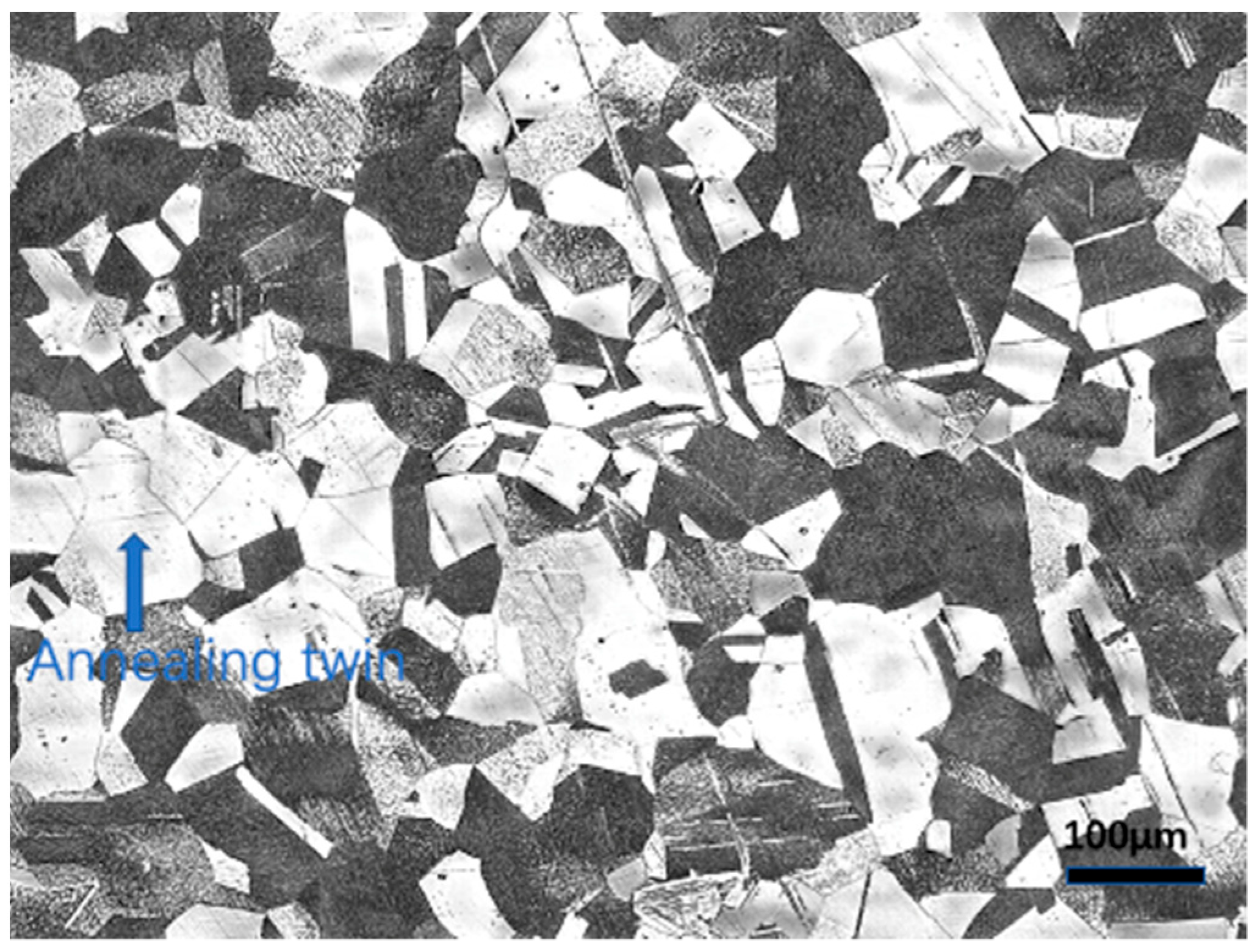
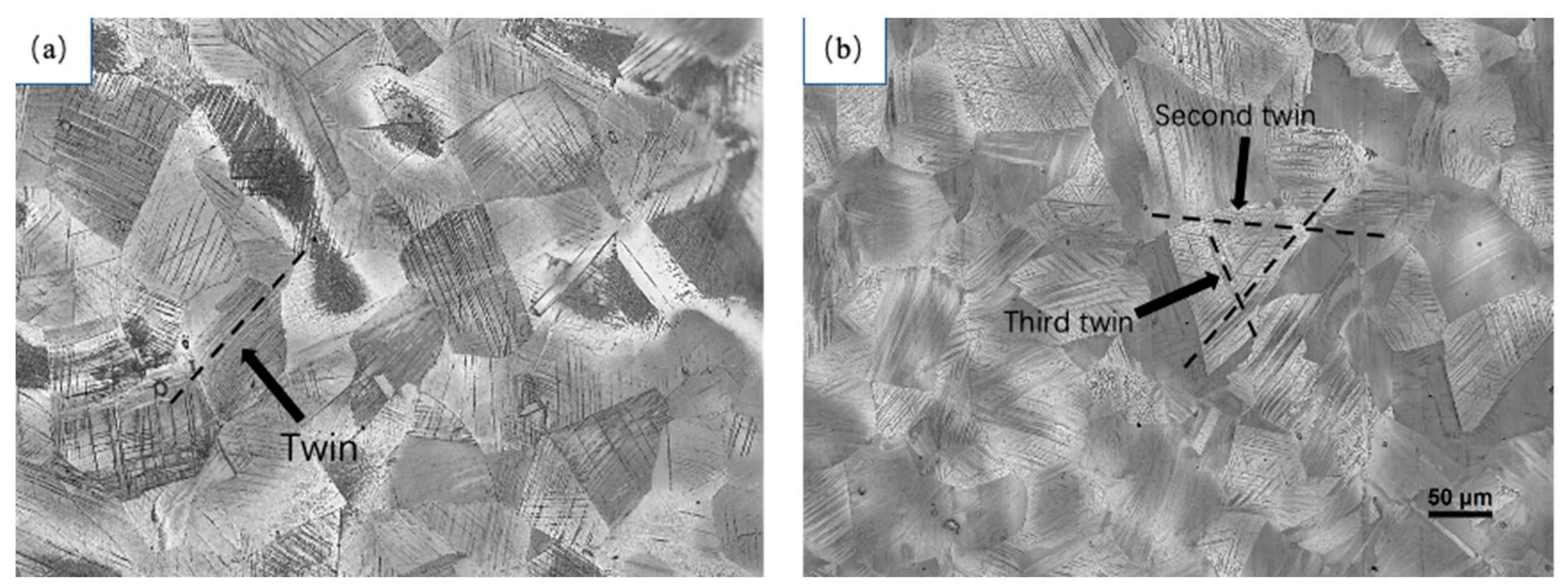
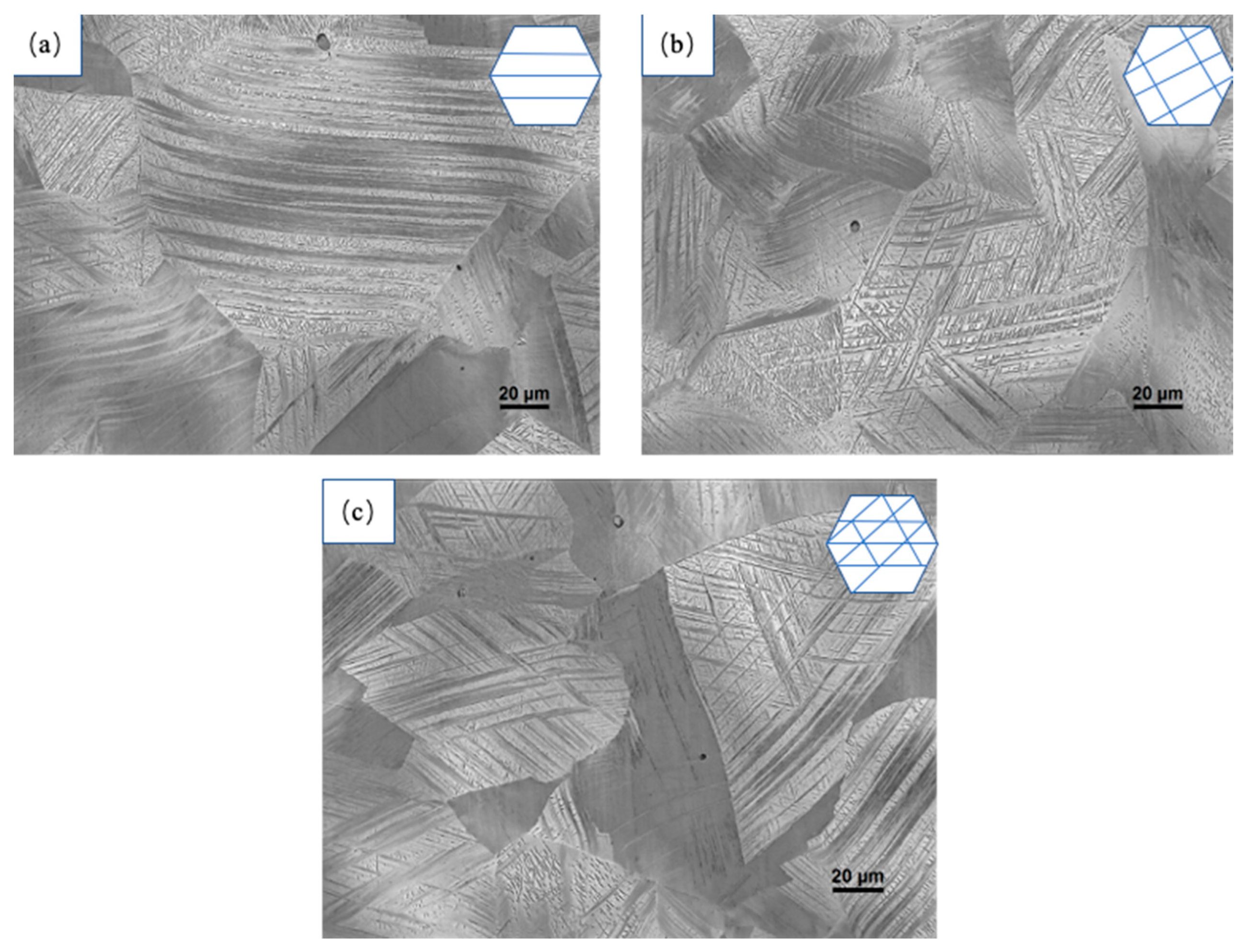

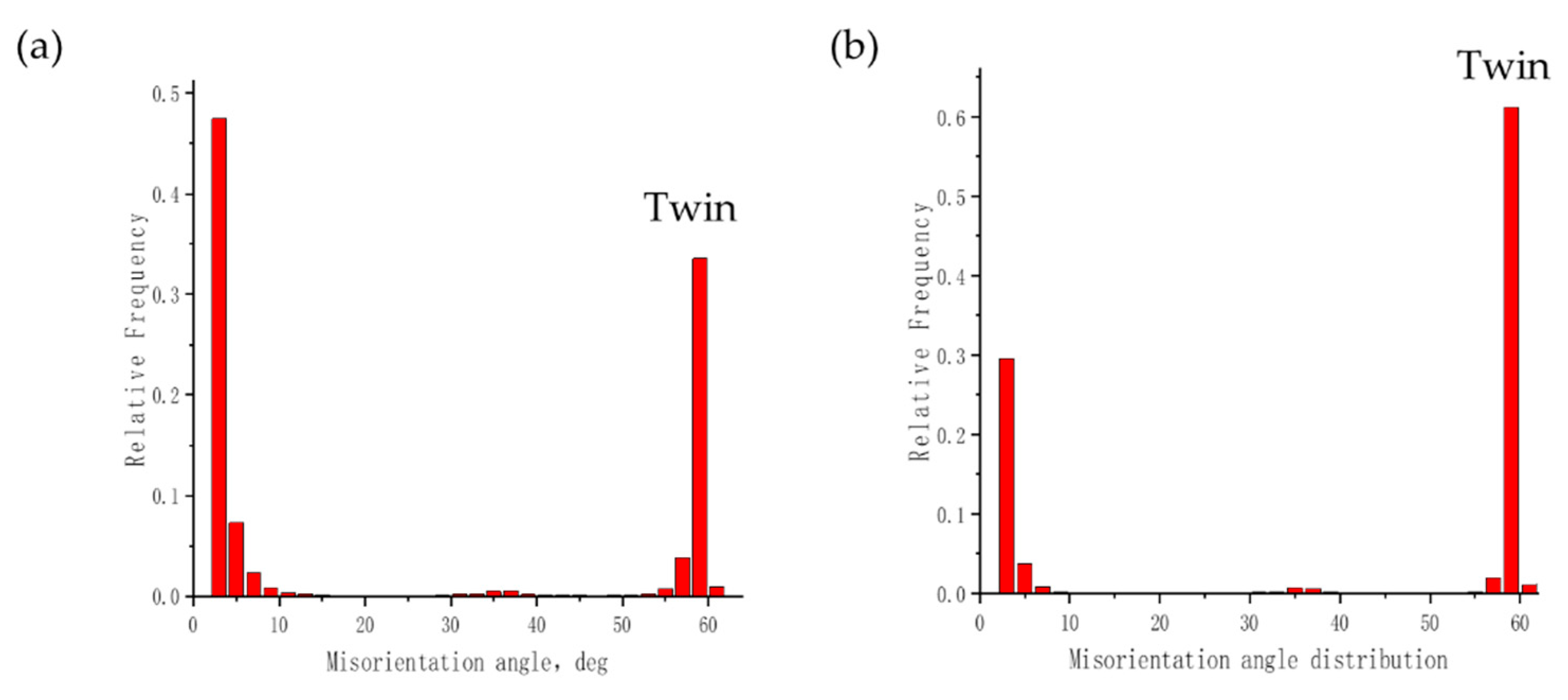

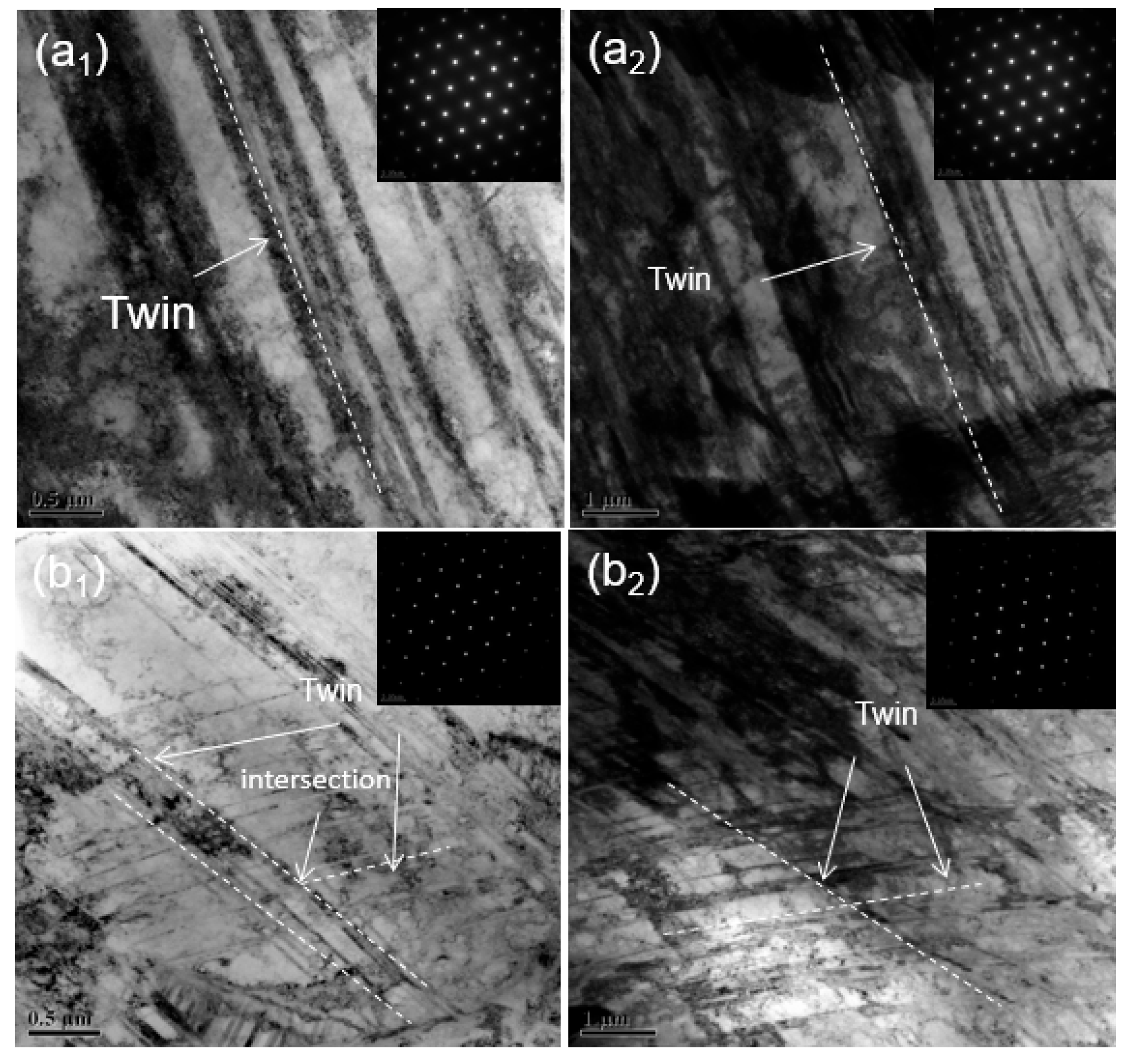
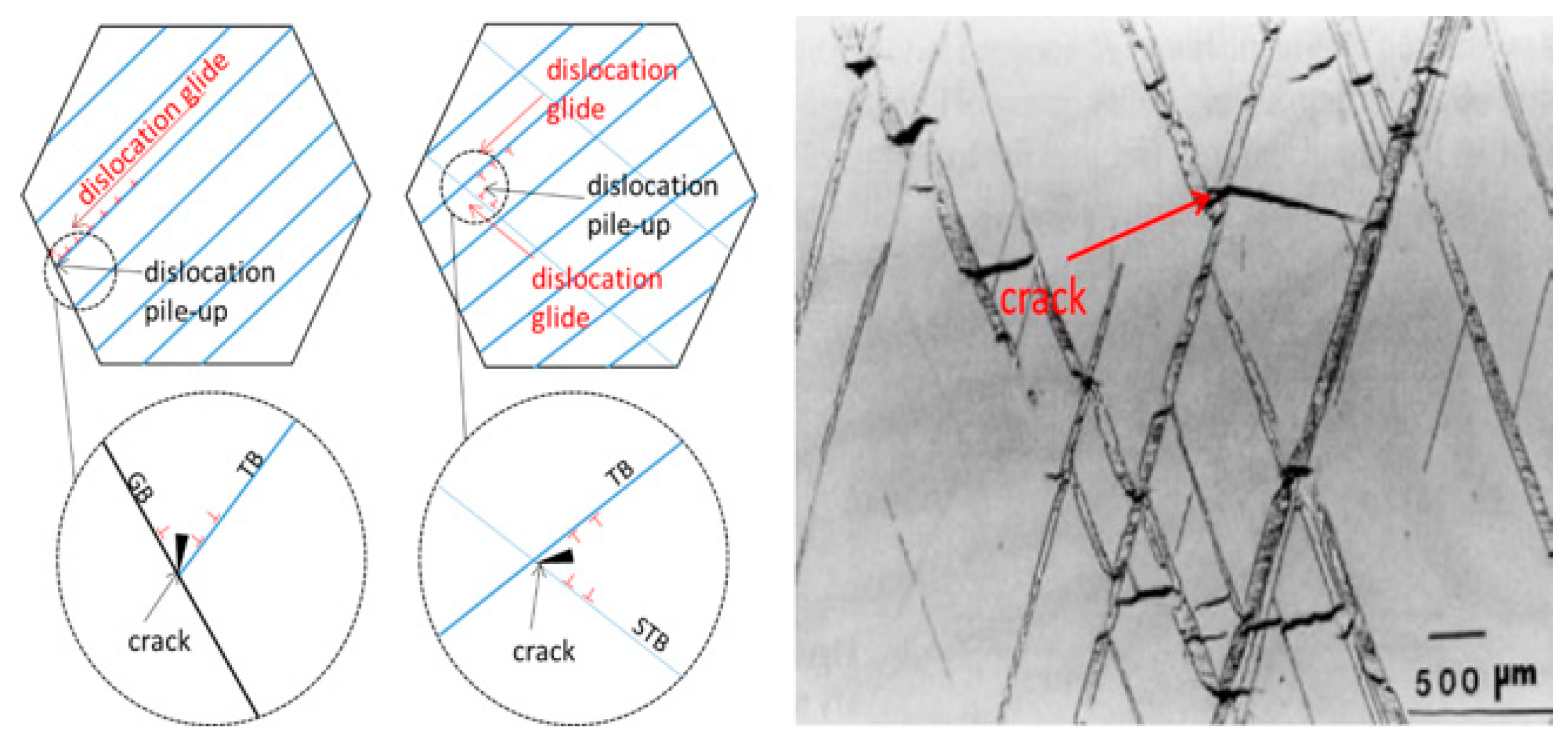
| Element | Mn | Si | Al | C | Fe |
|---|---|---|---|---|---|
| (wt.%) | 24.4 | 0.90 | 1.82 | 0.21 | Remainder |
Disclaimer/Publisher’s Note: The statements, opinions and data contained in all publications are solely those of the individual author(s) and contributor(s) and not of MDPI and/or the editor(s). MDPI and/or the editor(s) disclaim responsibility for any injury to people or property resulting from any ideas, methods, instructions or products referred to in the content. |
© 2024 by the authors. Licensee MDPI, Basel, Switzerland. This article is an open access article distributed under the terms and conditions of the Creative Commons Attribution (CC BY) license (https://creativecommons.org/licenses/by/4.0/).
Share and Cite
Wan, C.; Wu, W.; Zhang, X.; Zhang, L.; Song, K. Study on the Low Plastic Behavior of Expansion Deformation of Austenitic Stainless Steel. Materials 2024, 17, 1955. https://doi.org/10.3390/ma17091955
Wan C, Wu W, Zhang X, Zhang L, Song K. Study on the Low Plastic Behavior of Expansion Deformation of Austenitic Stainless Steel. Materials. 2024; 17(9):1955. https://doi.org/10.3390/ma17091955
Chicago/Turabian StyleWan, Chenglei, Wei Wu, Xuedi Zhang, Lulu Zhang, and Kaihong Song. 2024. "Study on the Low Plastic Behavior of Expansion Deformation of Austenitic Stainless Steel" Materials 17, no. 9: 1955. https://doi.org/10.3390/ma17091955




